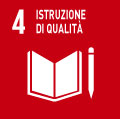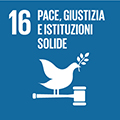- Docente: Francesca Ragno
- Crediti formativi: 10
- SSD: IUS/13
- Lingua di insegnamento: Inglese
- Moduli: Francesca Ragno (Modulo 1) Francesca Ragno (Modulo 2) Francesca Ragno (Modulo 3) Carmelo Danisi (Modulo 4) Francesca Ragno (Modulo 5)
- Modalità didattica: Convenzionale - Lezioni in presenza (Modulo 1) Convenzionale - Lezioni in presenza (Modulo 2) Convenzionale - Lezioni in presenza (Modulo 3) Convenzionale - Lezioni in presenza (Modulo 4) Convenzionale - Lezioni in presenza (Modulo 5)
- Campus: Forli
- Corso: Laurea in International Studies (cod. 5949)
-
Orario delle lezioni (Modulo 1)
dal 17/02/2025 al 19/05/2025
-
Orario delle lezioni (Modulo 2)
dal 31/03/2025 al 14/05/2025
-
Orario delle lezioni (Modulo 4)
dal 27/03/2025 al 22/05/2025
Conoscenze e abilità da conseguire
At the end of the course, students are expected to have the basic knowledge and tools to analyse, from a legal point of view, the most significant events that occur within the international community. They will be able to identify how international rules are generated and when/how they effectively apply within domestic orders. They will get full knowledge of specific set of international rules, such as the law of the treaties and those regulating international conflicts. They will be also able to identify the consequences of violations of international law, both in general and specifically in relation to the use of force for solving international controversies. Finally, thanks also to the continuous reference and analysis of the case law of the International Court of Justice, they will acquire basic elements of dispute resolution between States.
Contenuti
A) First Part (Lecture-style - 30 hours)
The first part of the course will address the following key basic aspects of Public International Law:
1. Historical evolution and current features of the international community from a legal perspective;
2. The subjects of the international legal system;
3. The sources: customary law, treaties, principles and other sources;
4. Jus cogens and relationships between sources of international law;
5. The application of international rules;
6. The law of State responsibility.
B) Second Part (Seminar-style - 10 hours)
The second part of the course will cover the law on the use of force (jus ad bellum).
1. The prohibition of the threat or use of force: historical roots, the scope of the prohibition and the UN collective security system;
2. Individual and collective self-defense;
3. Preventive and anticipatory self-defense;
4. Humanitarian intervention;
5. The use of force against non-state actors.
SPECIFIC INFORMATION FOR BAES STUDENTS
BAES students are reminded that the Public International Law course is offered at the Forlì campus.
Testi/Bibliografia
Attending students
A) First part of the course
One of the following handbooks:
1. International law, Jan Klabbers, CUP, 2021
2. International Law, Malcolm N. Shaw, CUP, 2021
Selected chapters for each handbook will be communicated in class at the start of the teaching term. Please note that some copies of listed handbooks are available for consultation at the Ruffilli Library of the Forli’ campus.
Other materials and relevant cases will be provided during the course. Assignments for classes will be posted on a weekly basis.
B) Second part of the course
Handbook: The Use of Force and International Law, Christian Henderson, CUP, 2023.
Other materials and relevant cases will be provided during the course. Assignments for classes will be posted on a weekly basis.
Documents:
The following documents should be consulted regularly during the teaching term: the UN Charter, the Vienna Convention on the Law of Treaties, the Italian Constitution, the ILC’s Drafts Articles on International Responsibility.
A copy of each document will be available for downloading on Virtuale before the start of the teaching term.
Non-attending students
Non-attending students are expected to prepare on one of the following handbooks (depending on their preferences):
1. International law, Jan Klabbers, CUP, 2021
2. International Law, Malcolm N. Shaw, CUP, 2021
3. A concise introduction to international law, Attila Tanzi, Giappichelli, 2022
Metodi didattici
The course is organized in lectures and seminars, as detailed below. In the first part of the course (30 hours), the class format will be based on in-class lectures, case analysis and discussion of selected issues. In the second part of the course (10 hours), the class format will be seminar style and will be oriented to engage students in the learning process more directly by stimulating in-class presentations and facilitating interaction. Still, a Socratic method will be adopted during the entire course; students are therefore expected to complete readings and assignments before class in order to be able to participate in class.
For the seminar section of the course, students will be divided in 4 groups (one of which composed only by BAES students). Students will attend a total of 40 hours of classes.
Modalità di verifica e valutazione dell'apprendimento
Attending students
The assessment of the course is based on two mid-term written tests (respectively dealing with the material covered in the first and in the second part of the course). The final grade obtained can then be adjusted based on the in-class participation and/or on the oral presentations that students will be invited to deliver in the seminar section of the course.
A) First part of the course
The first test will consist of 11 multiple-choice questions and 2 open-ended essay questions. The grade will be calculated according to the formula detailed below: 1) multiple choice questions: 2 points for every correct answer, 0,5 points will be deducted for any wrong/missing answer; 2) open-ended essay questions: max 9 points. Therefore, maximum score is 30 cum laude (31 points awarded in total), minimum score to pass is 18 (18 points awarded in total).
B) Second part of the course
The second test will consist of a mock case and will be awarded up to 30 points.
Students that are not satisfied with the final grade obtained and students that have failed or missed one of the written tests can be reassessed in an oral examination. In both cases the oral examination will cover all course materials.
Students that have not passed any mid-term will be considered as non-attending students (for evaluation purposes only).
Non-attending students
Non-attending students (and students that have not passed any mid-term tests) cannot be directly assessed at the final oral examination. They will need to pass a preliminary written test. This test will be made up of 15 multiple-choice questions and will be held on the same day of the final oral examination. In order to be admitted to the oral examination, non-attending students will have to provide a minimum of 11 correct answers. The oral examination will consist of three questions on the content of one of the textbooks recommended for non-attending students: each answer will be graded on a 0-10 scale.
SPECIFIC INFORMATION FOR BAES STUDENTS
BAES students are reminded that the BAES study plan awards 12 ETCS for the Public International Law course.
In order to obtain 12 ECTS, BAES students should:
- attend all lectures, sit two mid-term written exams and deliver (on a voluntary basis) an oral presentation in the seminar part of the course, as every other student enrolled in the PIL course;
and
- sit a final and compulsory oral exam based on at least one question about topics covered in class.
Further information will be provided in class at the beginning of the course.
Strumenti a supporto della didattica
PPT presentations, weekly Wrap-up on Virtuale. EOL might be used for mid-term exams.
Orario di ricevimento
Consulta il sito web di Francesca Ragno
Consulta il sito web di Carmelo Danisi
SDGs




L'insegnamento contribuisce al perseguimento degli Obiettivi di Sviluppo Sostenibile dell'Agenda 2030 dell'ONU.
